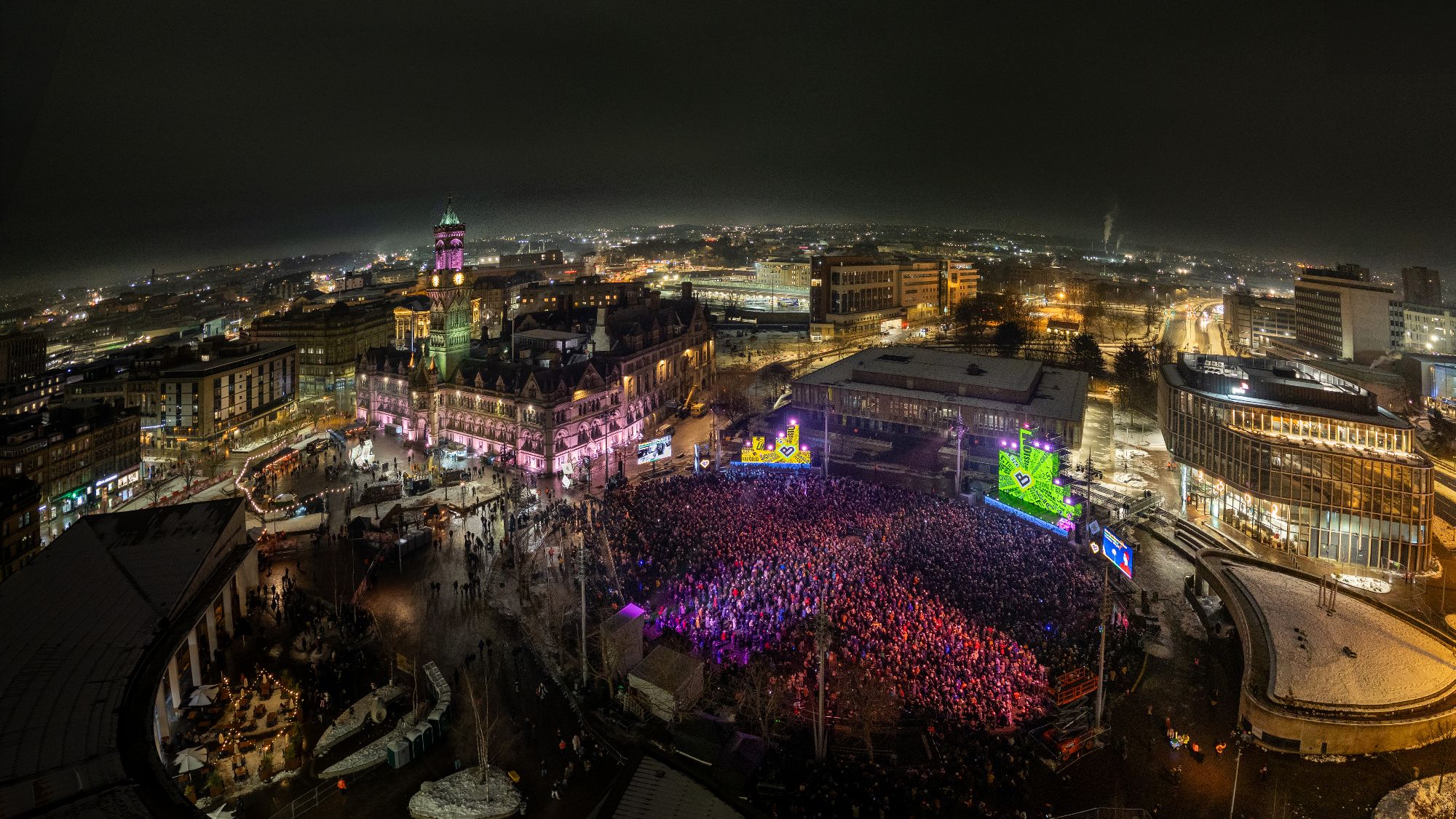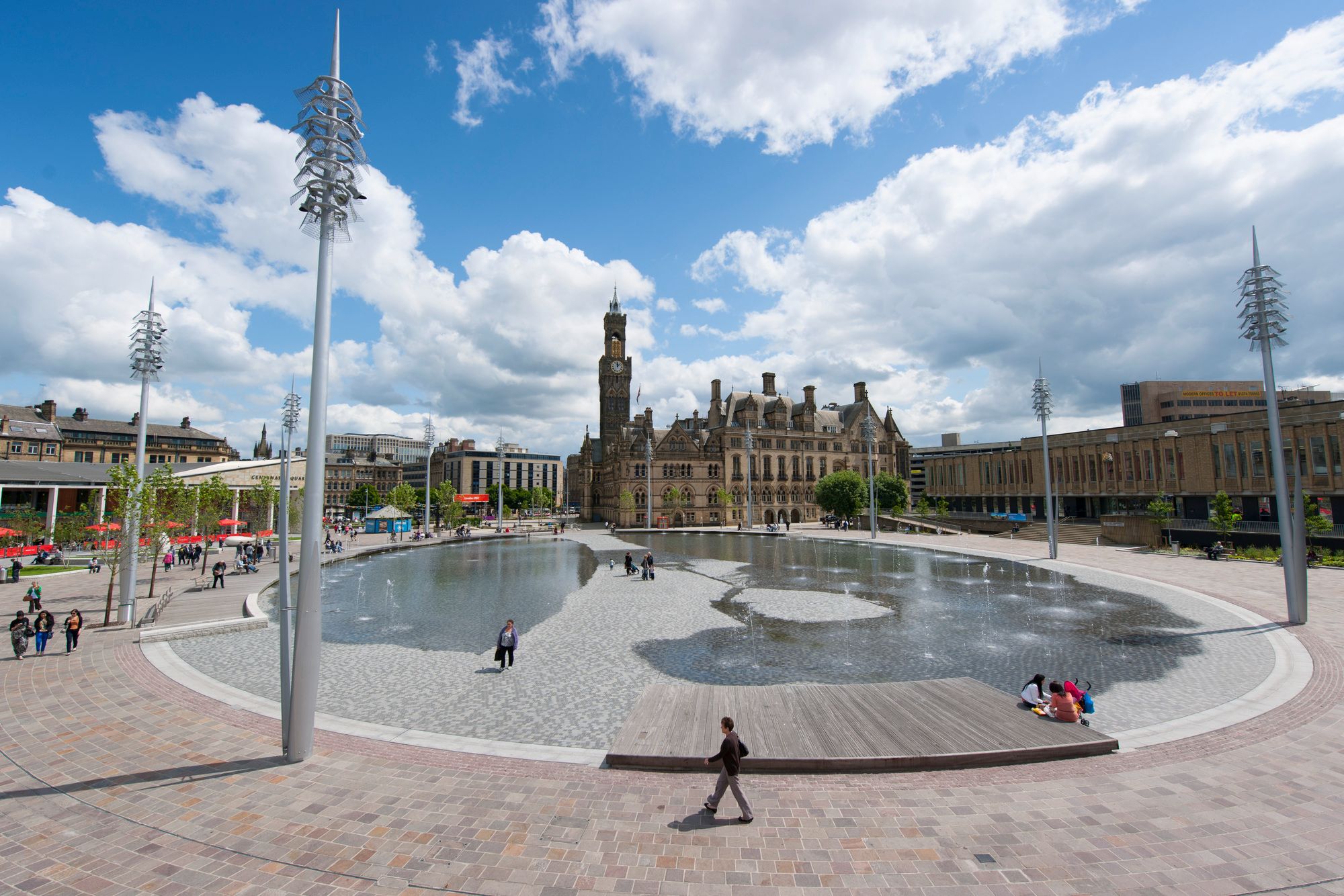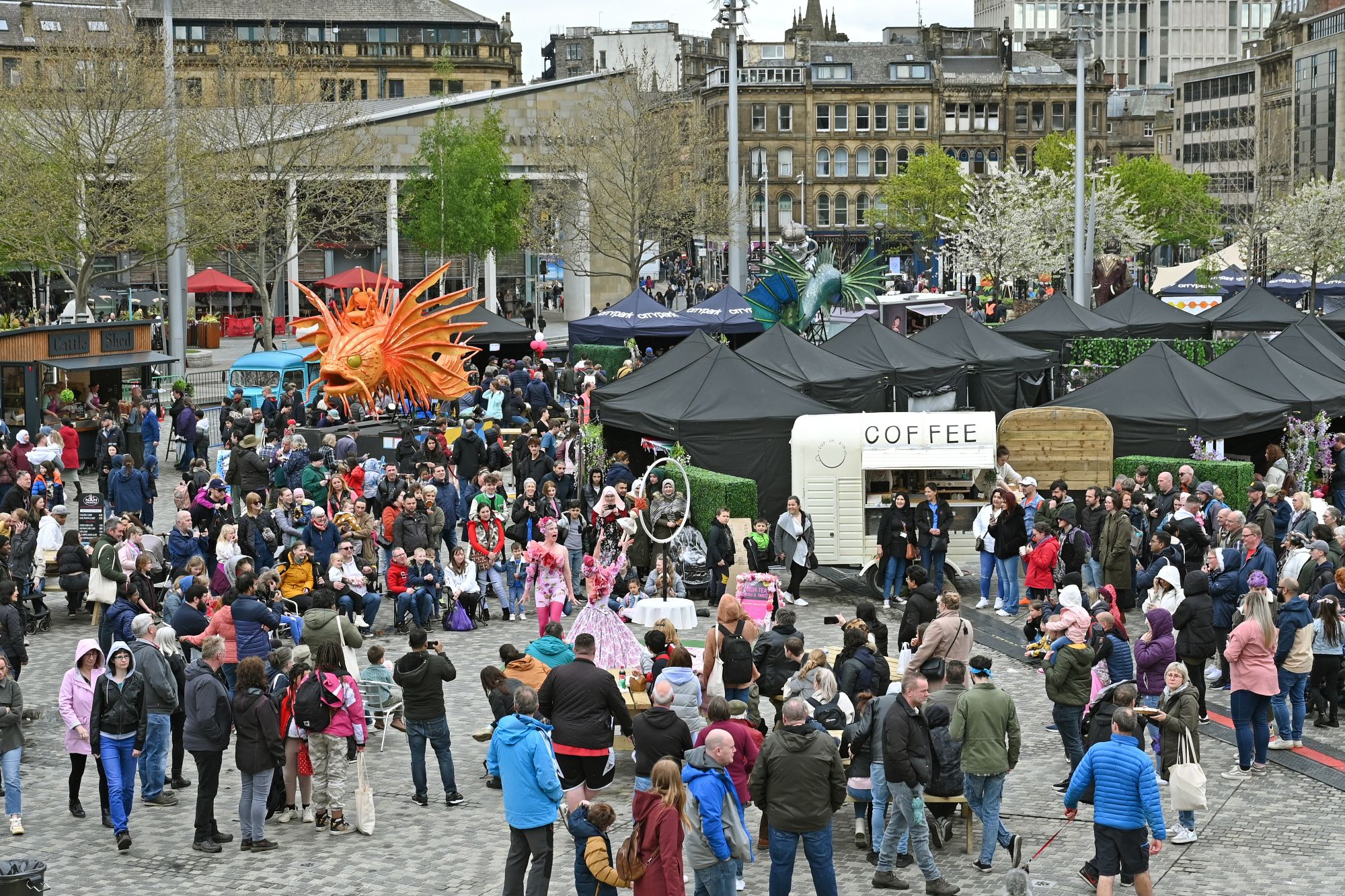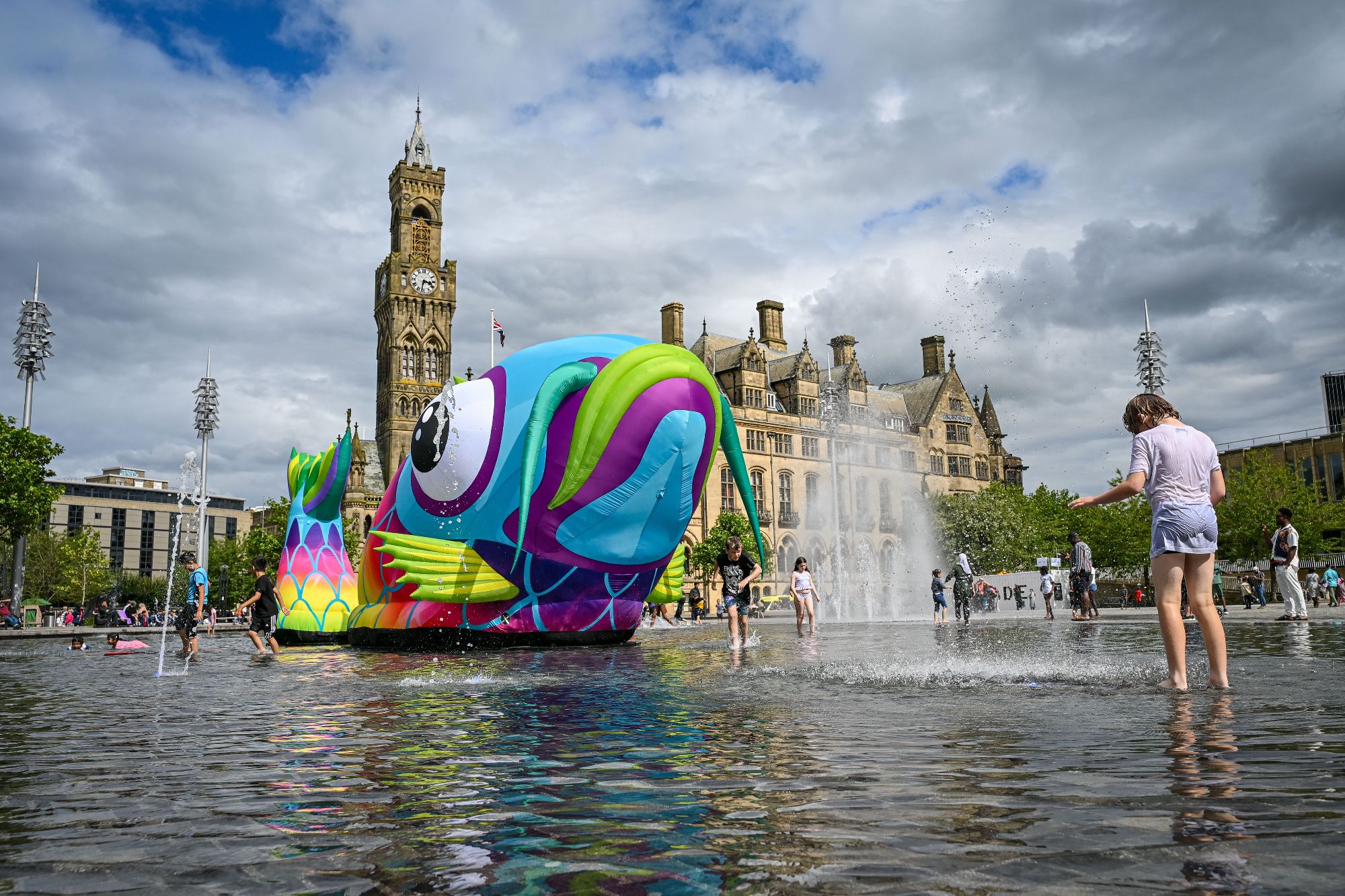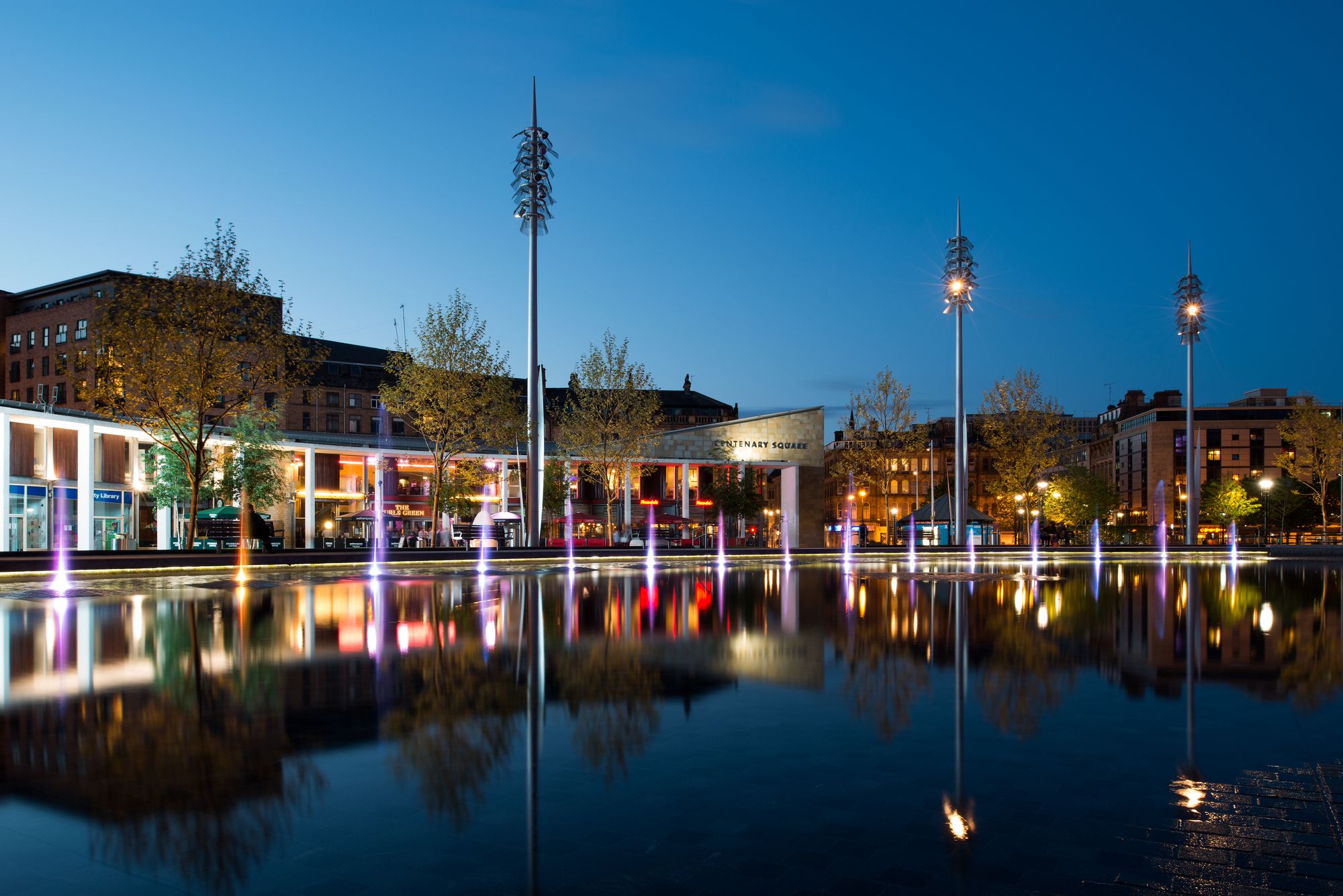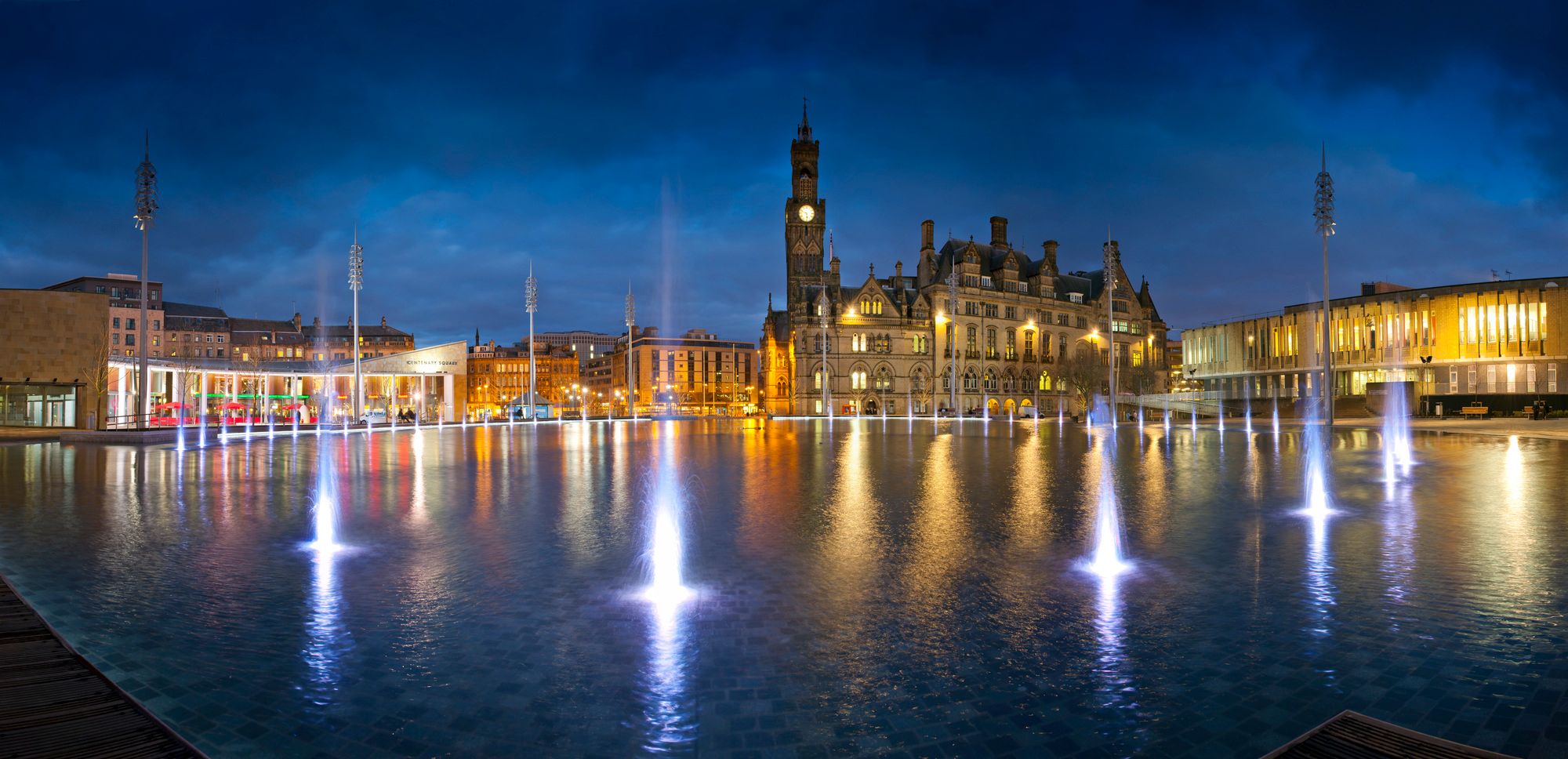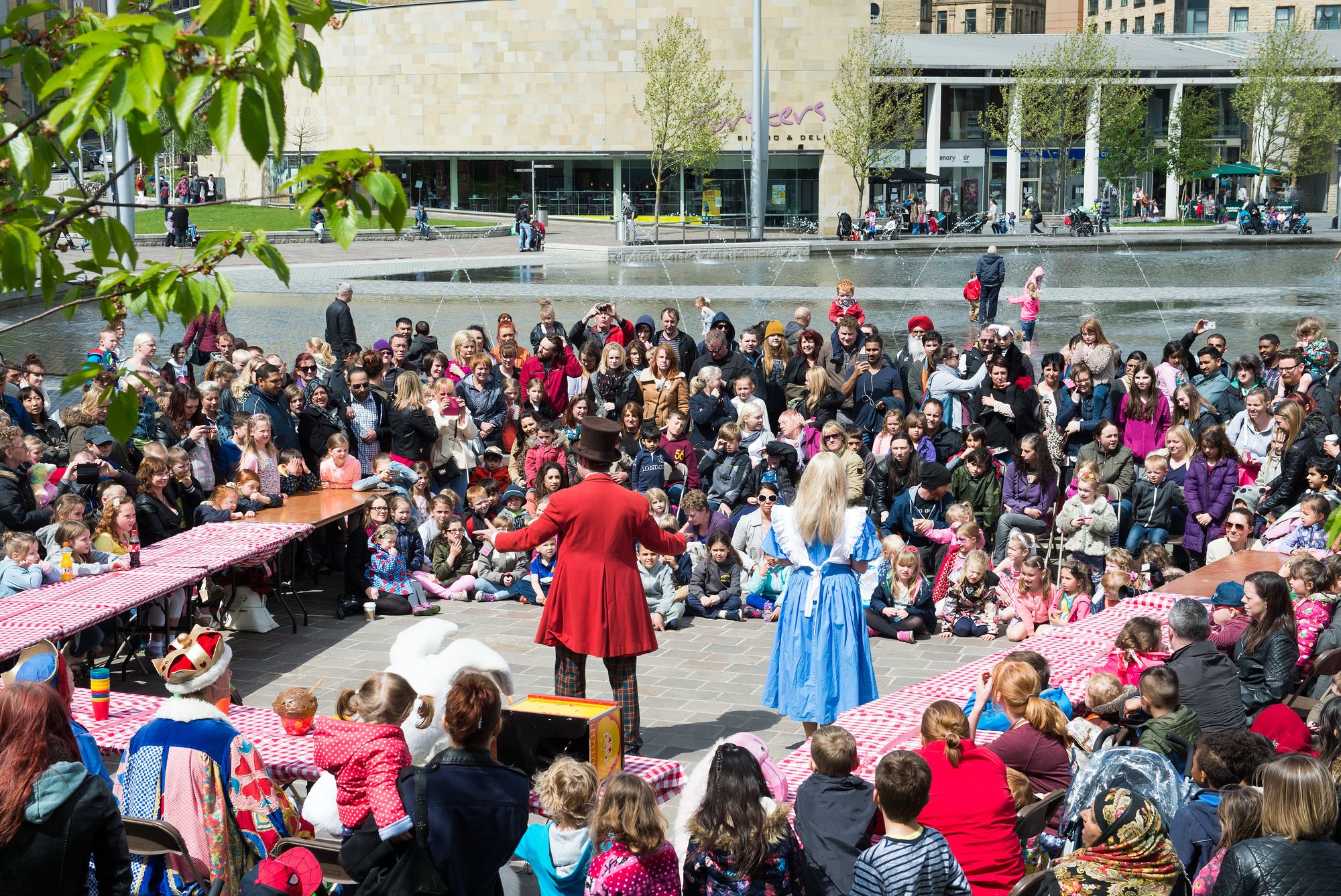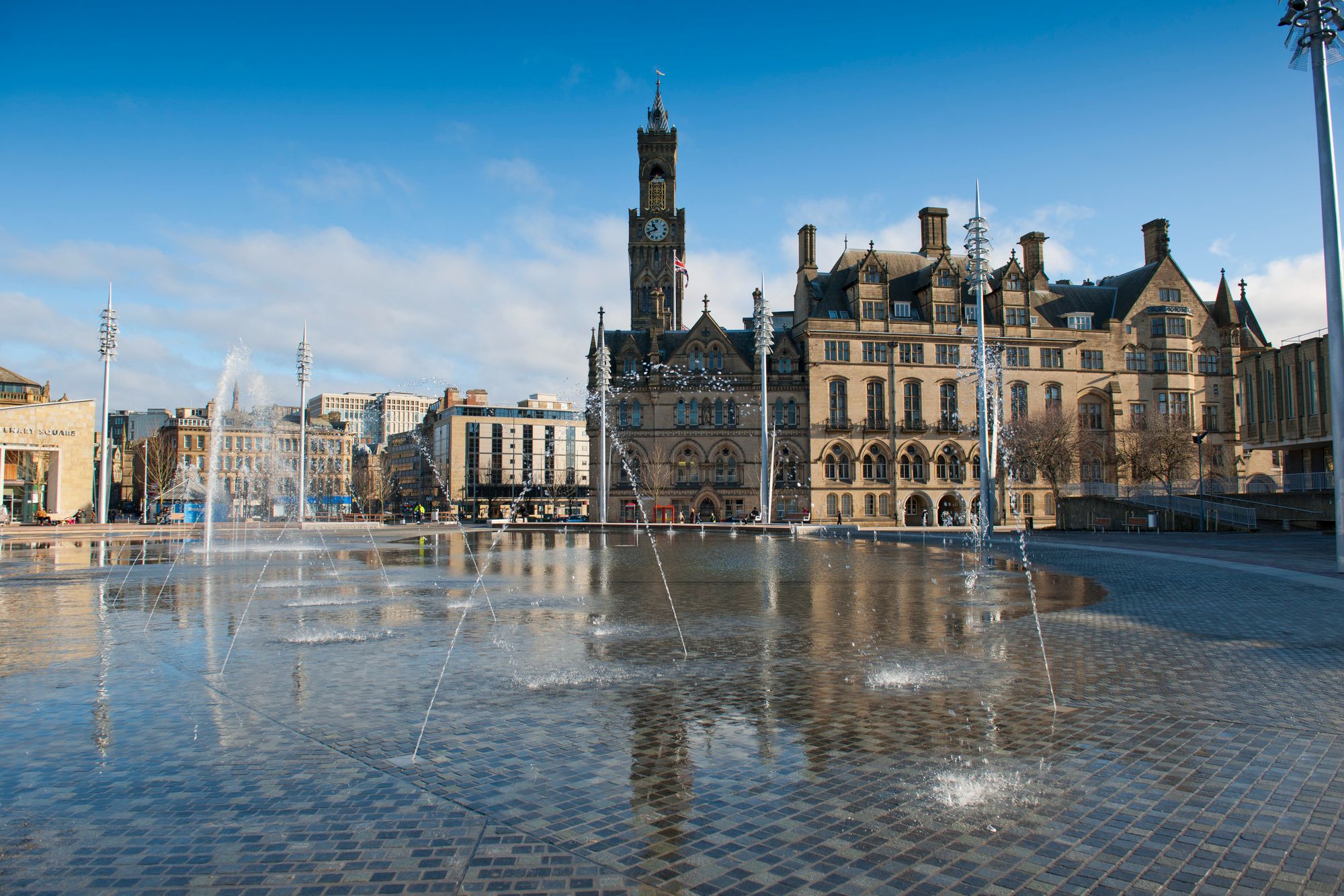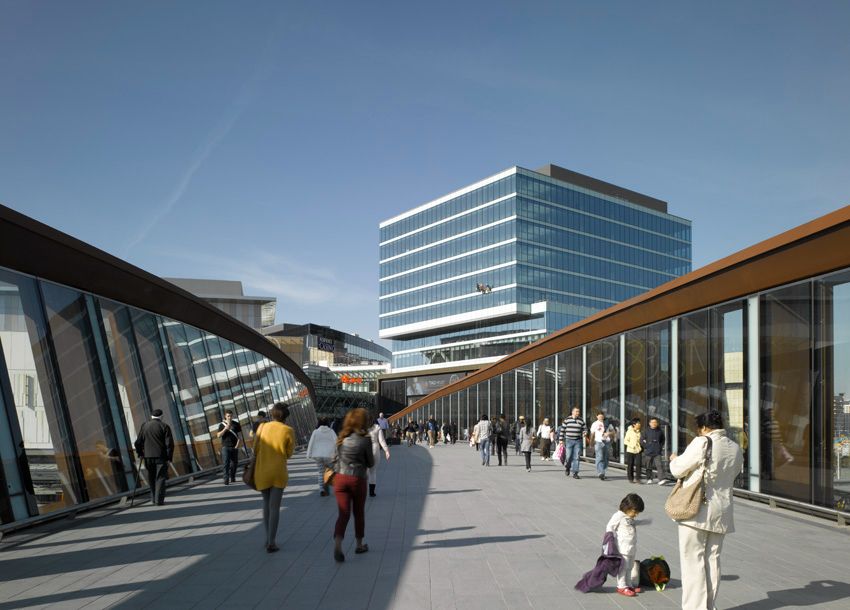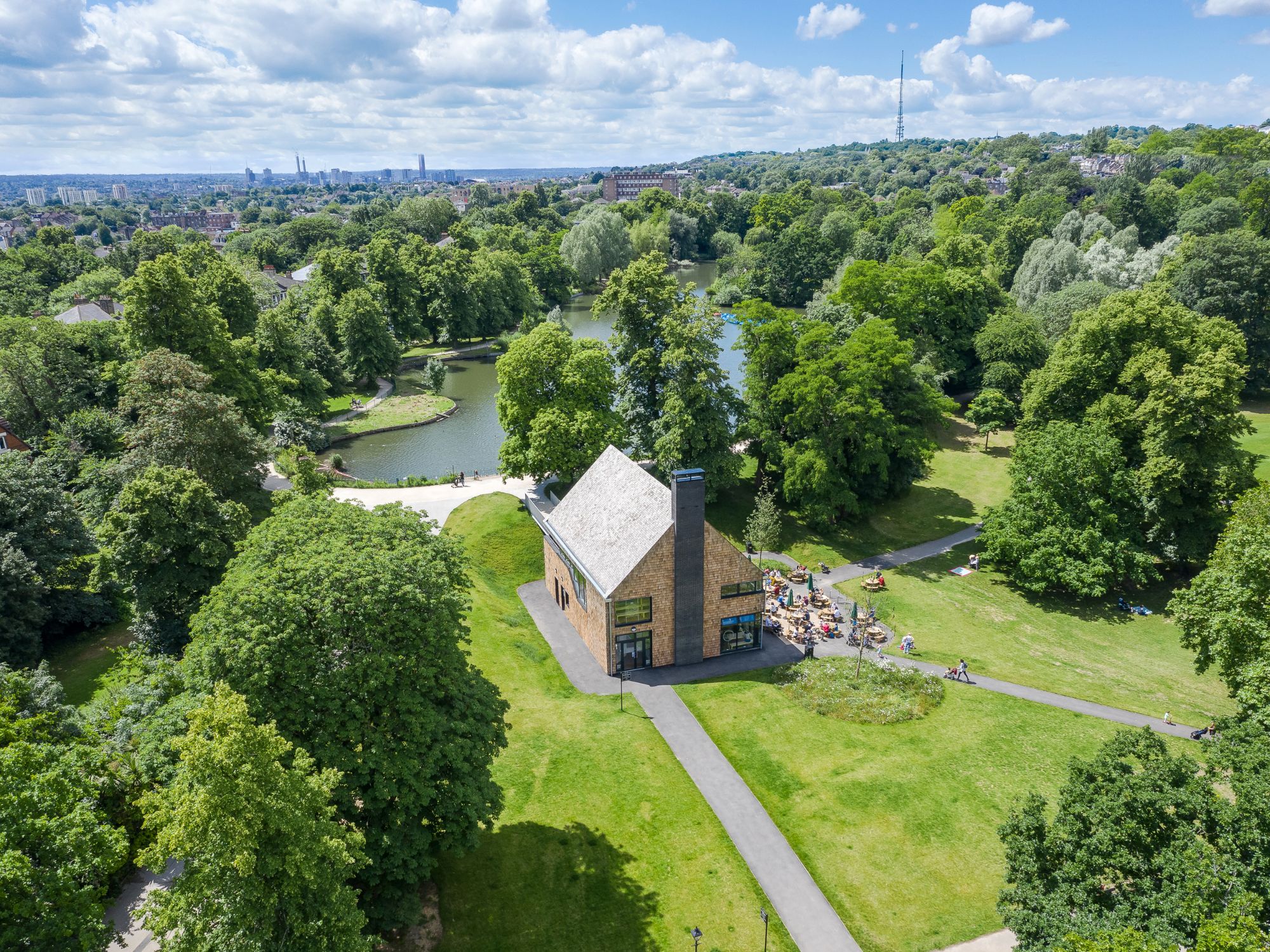Infrastructure & public realm
Bradford City Park by Gillespies
Bradford City Park by Gillespies will be presented at the AT Awards live finals on 17 September 2025. Learn more about the project below.
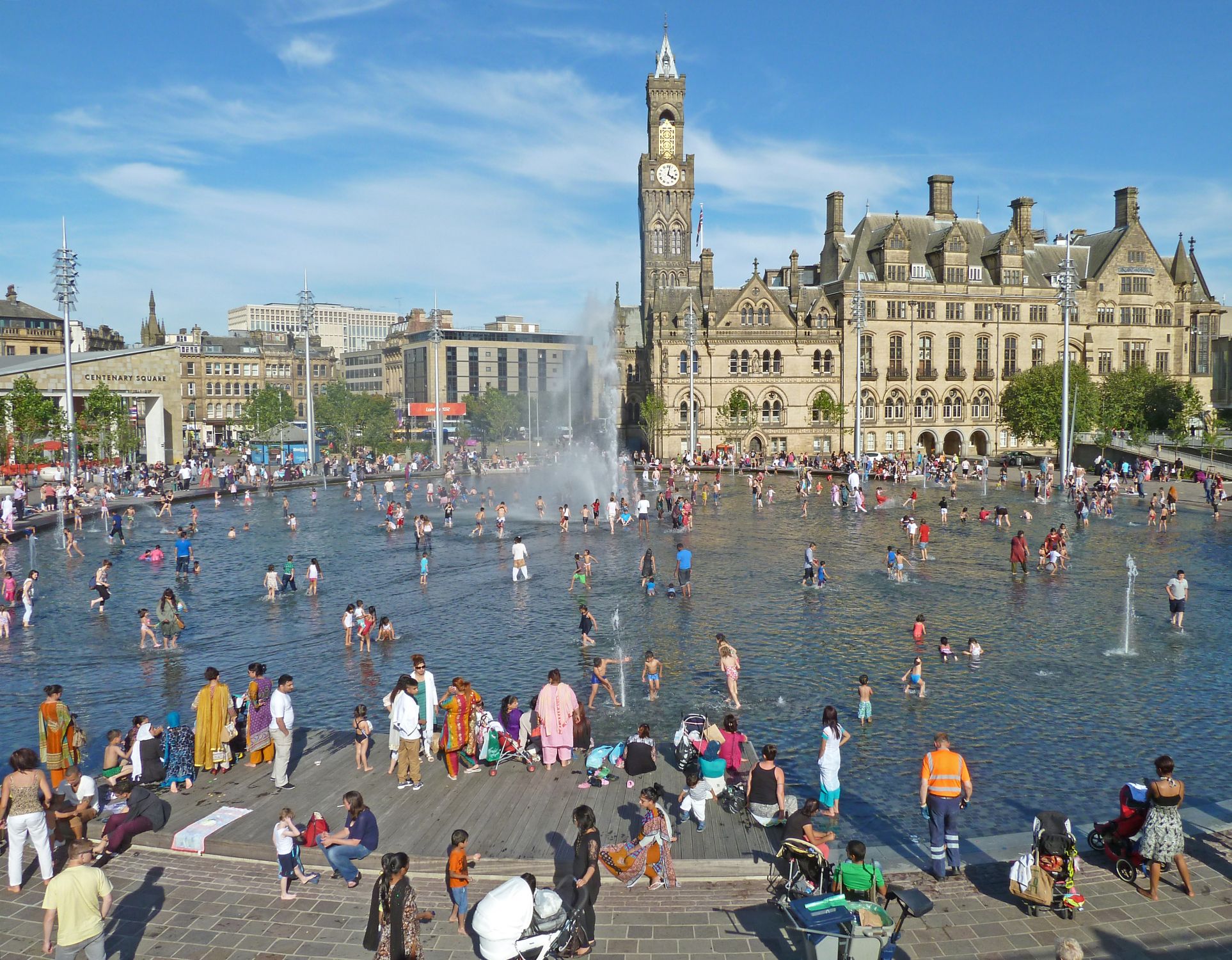
Bradford City Park was developed as part of a long-term vision to revitalise the city centre following decades of decline. Initiated by a 2003 masterplan from architect Will Alsop, the project proposed replacing a section of 1960s infrastructure with a central water feature. Gillespies were appointed by Bradford Council in 2009 to deliver the scheme, resulting in a flexible public space with a shallow, programmable Mirror Pool. The park opened in 2012 and now plays a central role in civic life, supporting both informal use and large-scale events.
The project required extensive technical coordination and engineering input, particularly in integrating hydraulic and filtration systems without compromising the public realm. Delivered at a cost of £24.4 million over six years, it also involved significant stakeholder engagement and funding support from Yorkshire Forward. A borehole was introduced to support water efficiency, and all plant was concealed beneath a landscaped pavilion. Addressing concerns about safety, access, and long-term maintenance was essential to building public confidence in the design.
The park has remained largely unchanged but continues to adapt to the needs of the city. Its core feature—the Mirror Pool—functions as both an attraction and a flexible civic space that can be drained to accommodate festivals, demonstrations, and performances. During the COVID-19 pandemic, the space supported safe outdoor gatherings. City Park has helped unlock further regeneration, including the One City Park office development, and has played a significant role in supporting Bradford’s UK City of Culture 2025 bid.
Environmental sustainability was embedded from the outset through the use of locally sourced materials, rainwater harvesting, and energy-efficient lighting. Removing vehicles from the city centre has contributed to lower emissions and measurable health improvements. The park supports local economic activity, providing permanent jobs, attracting national businesses, and hosting more than 50 events annually.


